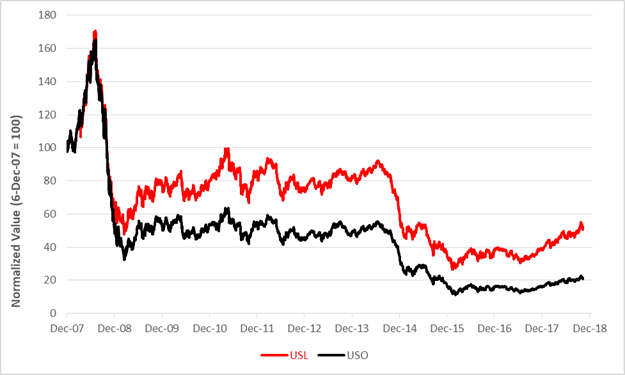The oil market was shaken on Thursday. Well, for some traders anyway. In case you didn’t notice, futures on light, sweet crude oil flipped from backwardation to contango.
Did that sound like mumbo-jumbo? Let me explain. Contango describes a futures price curve in which contracts for distant deliveries trade at a premium to nearby contracts. Backwardation refers to the opposite state, when nearby futures change hands at prices higher than deferred contracts.
For 211 trading days, going back to December 2017, the spot NYMEX contract commanded a premium over the delivery three months hence. The reason this condition is tagged as backwardation is that this pricing flips the market for a storable commodity like oil on its ear. A normal market exhibits premium forward pricing—contango—reflecting the costs of carrying the commodity for future delivery. Carrying costs include storage charges, together with insurance and financing fees. The normalcy here is in the supply. Carrying charges apply to markets where there are adequate stocks to put into storage. A market inverts, or slips into backwardation, when supplies tighten to such an extent that users, unwilling to wait for their goods, bid up prices for immediate delivery. There’s less, or nothing, being put into storage.
You starting to see the significance of Thursday’s market? Perceptions, they are a changin’ from shortage to glut. Well, maybe glut is too strong a word. After all, Thursday’s closing 3-month contango was just 11 cents a barrel. Back in the depths of the Great Recession, when you couldn’t give crude away, the contango was more than $15 a barrel.
All this has implications for securities investors—especially those who’ve made allocations to oil-tracking ETFs. The big daddy among them, trading more than 16 million shares daily, is the United States Oil Fund (NYSE Arca: USO). USO tracks the front, or spot, futures contract, so it must roll its portfolio position forward monthly. That makes the ETF exquisitely sensitive to contango. And by sensitive, I mean vulnerable to pain. A roll entails selling the portfolio’s existing contracts and buying the futures contract one month out. In a contango, that translates to selling the lower-priced contract and buying the higher-priced one, creating a transactional deficit. If the basis in the expiring contract isn’t low enough, the roll could result in a realized loss. A string of such losses could be disastrous. The last contango run lasted 748 trading days between November 2014 and November 2017. You can see contango’s effect on USO in the chart below. USO’s depicted by the black line.

So what’s the red line? It’s the price trajectory for a sister portfolio, the United States 12-Month Oil Fund (NYSE Arca: USL). USL also tracks NYMEX oil futures, but instead of devoting all of its portfolio space to a single contract, invests in an array of the 12 nearest deliveries. With this allocation, USL needn’t roll over its entire portfolio monthly, making it less sensitive to the ravages of contango. Since its 2007 launch, USL has earned an aggregate 30 percent premium over USO. Or, more accurately, lost 30 percent less than USO.
Given their different sensitivities, USO and USL provide traders and institutional investors with diverse ways—short and long—to manage exposure to the oil market. For the hoi polloi, a switch to a contango market should be a wake-up call. The call? USO returns are likely to be eroded. USO holders should consider a sale or, if confident of future oil price strength, at least contemplate switching to USL.
Brad Zigler is WealthManagement’s Alternative Investments Editor. Previously, he was the head of Marketing, Research and Education for the Pacific Exchange’s (now NYSE Arca) option market and the iShares complex of exchange traded funds.





